Bisoctrizole
Synonym(s):2,2′-Methylenebis[4-(1,1,3,3-tetramethylbutyl)-6-benzotriazol-2-ylphenol];2,2′-Methylenebis[6-(2H -benzotriazol-2-yl)-4-tert -octylphenol];2,2′-Methylenebis[6-(2H-benzotriazol-2-yl)-4-(1,1,3,3-tetramethylbutyl)phenol]
- CAS NO.:103597-45-1
- Empirical Formula: C41H50N6O2
- Molecular Weight: 658.87
- MDL number: MFCD01103222
- EINECS: 403-800-1
- SAFETY DATA SHEET (SDS)
- Update Date: 2025-02-11 10:28:58
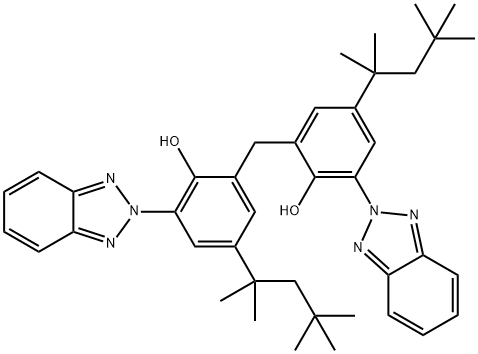
What is Bisoctrizole?
Absorption
A rat and human dermal penetration study in vitro indicates that bisoctrizole displays minimal absorption through the skin, with only about 0.01% and 0.06 % of the applied dose penetration through the human and rat skin membrane, respectively . Despite low dermal uptake, potential bioaccumulation after repeated skin applications cannot be excluded .
Toxicity
Both oral LD50 and dermal LD50 in rat is > 2000 mg/kg . In a developmental toxicity study of rats, the maternal and developmental no-observed-effect-level (NOEL) of bisoctrizole was the high dose level of 1000 mg/kg bw/day . Animal studies suggest that bisoctrizole mediates no phytotoxic effects .
Description
The two benzotriazole groups in bisoctrizole make it an ideal substance for absorbing ultraviolet radiation. Thus, it is produced by BASF (Ludwigshafen, Germany) and MPI Chemie (Houten, The Netherlands) as an additive for sunscreen formulations.
Most compounds used in sunscreens are dissolved in the organic or aqueous phase of the product. But bisoctrizole is almost insoluble in anything, so it is prepared in microfine particles that are suspended in the aqueous phase.
Bisoctrizole is approved for use in the European Union and elsewhere, but not in the United States. The reason is that the manufacturers of bisoctrizole and other sunscreen ingredients are in a stalemate with the US Food and Drug Administration. FDA has requested additional toxicity data for the products to comply with current regulations, but the producers, citing the cost of testing, have asked FDA to relax the standards. As of January 2018, the situation had not been resolved.
Chemical properties
White powder
The Uses of Bisoctrizole
Bisoctrizole is a light stabilizer in polymers and resins. It is majorly used as a UV filter in sunscreens and in photo-luminescent dyes for organic electronic based applications.
Background
Bisoctrizole, or methylene bis-benzotriazolyl tetramethylbutylphenol, is a broad-spectrum organic UV filter that is marketed as Tinosorb M . It is a benzotriazole-based organic compound that absorbs, reflects, and scatters both UV-A and UV-B rays. Bisoctrizole is not approved by the FDA, but is approved in the EU and other parts of the world as a UV-filter in sunscreens, day care products and skin lightening products at a maximum concentration of 10% .
Indications
Indicated for use as a sunscreen agent in cosmetic products.
Definition
ChEBI: Bisoctrizole is a diarylmethane. It is a broad-spectrum organic UV filter that is marketed as Tinosorb M. It is a benzotriazole-based organic compound that absorbs, reflects, and scatters both UV-A and UV-B rays.
brand name
Tinosorb M (Ciba Specialty Chemicals).
General Description
Bisoctrizole is a benzotriazole based additive that is used as an ultraviolet absorber (UVA). It reduces degradation of the polymeric material by absorbing the UV radiation and converting it to thermal heat. Bisoctrizole is often added to sunscreen formulations that It may protect skin against blue light and other environmental assaults.
Pharmacokinetics
Under the conditions of in vitro androgen competitive binding assay, bisoctrizole displayed no intrinsic androgenic, estrogenic, nor uterotrophic activity .
Metabolism
No pharmacokinetic data available.
Properties of Bisoctrizole
| Melting point: | 197-199 °C(lit.) |
| Boiling point: | 771.6±70.0 °C(Predicted) |
| Density | d20 1.2 |
| vapor pressure | 0Pa at 25℃ |
| Flash point: | >200°C |
| storage temp. | Inert atmosphere,Room Temperature |
| solubility | almost transparency in THF |
| pka | 7.62±0.50(Predicted) |
| appearance | white powder |
| form | neat |
| form | Solid |
| color | White to Orange to Green |
| Water Solubility | Insoluble < 5 ng/L at 25 °C |
| Merck | 14,1294 |
| BRN | 11326835 |
| Stability: | Light Sensitive |
| CAS DataBase Reference | 103597-45-1(CAS DataBase Reference) |
| EPA Substance Registry System | Phenol, 2,2'-methylenebis[6-(2H-benzotriazol-2-yl)-4-(1,1,3,3-tetramethylbutyl)- (103597-45-1) |
Safety information for Bisoctrizole
| Signal word | Warning |
| Pictogram(s) |
 Exclamation Mark Irritant GHS07 |
| GHS Hazard Statements |
H302:Acute toxicity,oral |
| Precautionary Statement Codes |
P280:Wear protective gloves/protective clothing/eye protection/face protection. P305+P351+P338:IF IN EYES: Rinse cautiously with water for several minutes. Remove contact lenses, if present and easy to do. Continuerinsing. |
Computed Descriptors for Bisoctrizole
| InChIKey | ZRFPPIQVEQSFRV-UHFFFAOYSA-N |
Bisoctrizole manufacturer
SPARKVEE FINE CHEMICALS PRIVATE LIMITED
New Products
(R)-1-Boc-3-hydroxypyrrolidine Methyl (R)-1-Boc-4,4-difluoropyrrolidine-2-carboxylate 2,2-Difluoropropylamine hydrochloride tert-butyl 3-bromoazetidine-1-carboxylate DIFLUOROACETIC ANHYDRIDE 2,2-Difluoropropionic acid Diallylamine, 99% Calcium hydroxide, 95% Aluminum oxide, basic 2-Bromophenylacetonitrile, 97% L-tert-Leucine,97% N-Hydroxy-2-methylpropanimidamide 4-(3,4-Dichlorophenyl)-3,4-Dihydro-N-Methyl-1-(2H)-Naphthalenimine (Schiff Base) 2-AMINO-3,5-DIBROMO BENZALDEHYDE [ADBA] L-Glutamic Acid Dimethyl Ester Hcl 10-Methoxy-5H-dibenz[b,f]azepine 5-Cyanophthalide N, N-Carbonyldiimidazole (CDI) Dibenzoyl Peroxide Titanium Dioxide 2-(Methylthio) Benzonitrile Sodium Acetate Anhydrous Allopurinol 1,5-DibromopentaneRelated products of tetrahydrofuran

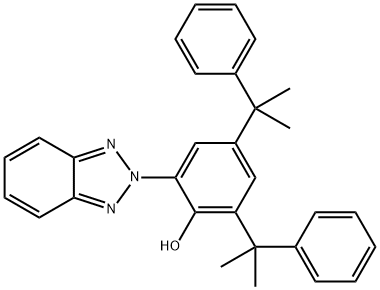
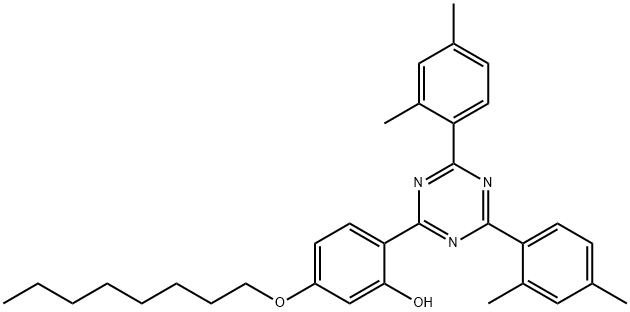


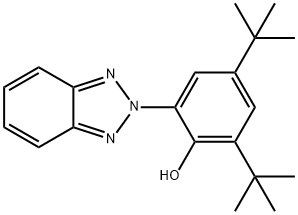
![Ethyl 4-[[(methylphenylamino)methylene]amino]benzoate](https://img.chemicalbook.in/CAS/GIF/57834-33-0.gif)
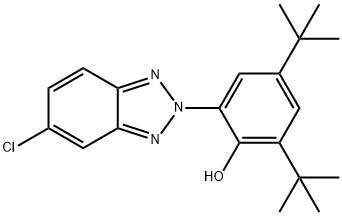
You may like
-
 103597-45-1 Methylenebis(2-hydroxy-3-(benzotriazol-2-yl)-5-tertoctylphenyl) 98.10View Details
103597-45-1 Methylenebis(2-hydroxy-3-(benzotriazol-2-yl)-5-tertoctylphenyl) 98.10View Details
103597-45-1 -
 103597-45-1 99%View Details
103597-45-1 99%View Details
103597-45-1 -
 Methylene Bis Benzotriazolyl Tetramethyl Butyl Phenol 103597-45-1 NLT 98%View Details
Methylene Bis Benzotriazolyl Tetramethyl Butyl Phenol 103597-45-1 NLT 98%View Details
103597-45-1 -
![2,2'-Methylenebis[6-(benzotriazol-2-yl)-4-tert-octylphenol] CAS 103597-45-1](https://img.chemicalbook.in//Content/image/CP5.jpg) 2,2'-Methylenebis[6-(benzotriazol-2-yl)-4-tert-octylphenol] CAS 103597-45-1View Details
2,2'-Methylenebis[6-(benzotriazol-2-yl)-4-tert-octylphenol] CAS 103597-45-1View Details
103597-45-1 -
 Bisoctrizole 98.00% CAS 103597-45-1View Details
Bisoctrizole 98.00% CAS 103597-45-1View Details
103597-45-1 -
 Bisoctrizole CAS 103597-45-1View Details
Bisoctrizole CAS 103597-45-1View Details
103597-45-1 -
 Ultraviolet Absorbent UV-360 95.00% CAS 103597-45-1View Details
Ultraviolet Absorbent UV-360 95.00% CAS 103597-45-1View Details
103597-45-1 -
 609-15-4View Details
609-15-4View Details
609-15-4
